We use information collected through cookies and similar technologies to improve your experience on our site, analyze how you use it and for marketing purposes.
Your privacy settings
We and our partners use information collected through cookies and similar technologies to improve your experience on our site, analyze how you use it and for marketing purposes. Because we respect your right to privacy, you can choose not to allow some types of cookies. However, blocking some types of cookies may impact your experience of the site and the services we are able to offer. In some cases, data obtained from cookies is shared with third parties for analytics or marketing reasons. You can exercise your right to opt-out of that sharing at any time by disabling cookies.
Manage Consent Preferences
Necessary
Always ON
These cookies and scripts are necessary for the website to function and cannot be switched off. They are usually only set in response to actions made by you which amount to a request for services, such as setting your privacy preferences, logging in or filling in forms. You can set your browser to block oralert you about these cookies, but some parts of the site will not then work. These cookies do not store any personally identifiable information.
Analytics
These cookies and scripts allow us to count visits and traffic sources, so we can measure and improve the performance of our site. They help us know which pages are the most and least popular and see how visitors move around the site. All information these cookies collect is aggregated and therefore anonymous. If you do not allow these cookies and scripts, we will not know when you have visited our site.
Embedded Videos
These cookies and scripts may be set through our site by external video hosting services likeYouTube or Vimeo. They may be used to deliver video content on our website. It's possible for the video provider to build a profile of your interests and show you relevant adverts on this or other websites. They do not directly store personal information, but are based on uniquely identifying your browser and internet device. If you do not allow these cookies or scripts it is possible that embedded video will not function as expected.
Google Fonts
Google Fonts is a font embedding service library. Google Fonts are stored on Google's CDN. The Google Fonts API is designed to limit the collection, storage, and use of end-user data to only what is needed to serve fonts efficiently. Use of Google Fonts API is unauthenticated. No cookies are sent by website visitors to the Google Fonts API. Requests to the Google Fonts API are made to resource-specific domains, such as fonts.googleapis.com or fonts.gstatic.com. This means your font requests are separate from and don't contain any credentials you send to google.com while using other Google services that are authenticated, such as Gmail.
Marketing
These cookies and scripts may be set through our site by our advertising partners. They may be used by those companies to build a profile of your interests and show you relevant adverts on other sites. They do not store directly personal information, but are based on uniquely identifying your browser and internet device. If you do not allow these cookies and scripts, you will experience less targeted advertising.
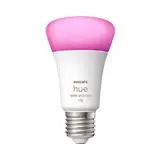
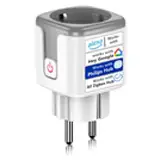
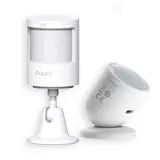
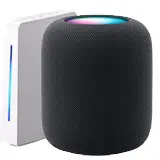
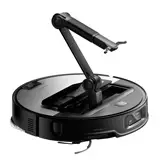

Lighting automation: create atmospheres with a single click
Imagine coming home after a long day. With a simple click on your phone, the lights dim to a warm, inviting level, soft music begins to play, and the blinds automatically lower. Everything is perfectly orchestrated to create the ideal atmosphere for you to relax. This, and much more, is possible thanks to the... Lighting automation.
What is Lighting Automation?
Lighting automation goes beyond just turning lights on and off. It's about creating custom lighting scenes that suit your needs and preferences. Imagine controlling the brightness, color, and even scheduling for each lamp in your home, all from your smartphone or with voice commands.
Basically, lighting automation gives you complete control over the light in your home, office, or any space. This lets you optimize the environment, save energy, and increase security..
Key Benefits of Smart Lighting
Essential Components of an Automated Lighting System
To start enjoying the benefits of lighting automation, you need a few key components. These are:
How Light Automation Works: An Inside Look
The way smart lighting automation works is relatively simple, even though the technology inside is pretty sophisticated. Smart bulbs communicate with a hub or directly with your router using wireless protocols like Wi-Fi, Zigbee, or Z-Wave. These protocols allow for two-way communication, meaning you can send commands to the bulbs and receive information about their status (on, off, brightness, etc.).
The mobile app acts as a centralized interface for controlling all devices. From the app, you can create lighting scenes, schedule times, and control the brightness and color of each light bulb. Voice assistants, such as Alexa or Google Assistant, integrate with the system via the manufacturer's API (Application Programming Interface).
Creating Environments with a Single Click: Practical Examples
The real magic of lighting automation lies in its ability to create personalized ambiances with a single click. Here are some practical examples:
"Movie Night"
Imagine dimming the overhead lights, turning on a soft ambient light behind the TV, and lowering the blinds, all with a single tap on your phone. This scene sets the perfect mood for a movie night at home..
Scene "Romantic Dinner"
Dim the dining room lights to a warm, inviting level, turn on some decorative lights, and play some soft music. This scene creates an intimate and relaxing atmosphere for a romantic dinner.
"Bedtime Scene"
Turn off all the lights in the house, except for one dim light in the hallway, and turn on a night light in the children's room. This setup makes it easier to fall asleep and provides security during the night.
Scene "Gentle Awakening"
Program the lights to gradually turn on before the alarm goes off. This scene simulates a sunrise and helps you wake up naturally and relaxed.
Lighting Automation and Energy Saving
Besides creating amazing atmospheres, lighting automation also helps you save energy. By controlling the intensity of the lights, scheduling times, and turning off the lights automatically when they're not needed, you can significantly reduce your electricity consumption.
For example, you can program your lights to turn off automatically when you leave the house or when no one is in a room. You can also use motion sensors to turn the lights on only when needed. Smart LED light bulbs, which use much less energy than traditional bulbs, also contribute to energy savings.
Home Security Enhanced with Smart Lighting
Lighting automation can significantly improve your home's security. You can program lights to turn on and off automatically at different times of day, simulating your presence when you're on vacation or away for work. This deters potential intruders and makes your home appear occupied.
Some smart lighting systems also integrate with security cameras and alarm systems. If suspicious movement is detected, the lights can automatically turn on to alert neighbors and deter intruders.
Integrating Smart Lighting Automation with Other Smart Devices
The true power of lighting automation is unleashed when it's integrated with other smart devices in your home. You can create scenes that involve lighting, music, temperature, and blinds, all synchronized to create the perfect ambiance.
For example, you could create a "Welcome Home" scene that turns on the lights, adjusts the temperature to your liking, plays your favorite music, and opens the blinds, all automatically when you arrive home. You can also integrate your lighting system with your security system so that the lights automatically turn on if an intrusion is detected.
Considerations When Choosing a Lighting Automation System
With so many options available on the market, choosing the right lighting automation system can be overwhelming. Here are some important considerations:
Best Practices for Lighting Automation
Here are some best practices to make the most of your lighting automation system:
Popular Examples of Lighting Automation Systems
Here are some examples of popular lighting automation systems available on the market:
The Future of Smart Lighting
The future of smart lighting is bright. As technology advances, we'll see even more sophisticated and user-friendly systems. Artificial intelligence will play an increasingly important role, allowing lighting systems to learn your habits and automatically adapt to your needs.
We'll also see greater integration with other smart devices, creating a truly connected home. Smart lighting will become an integral part of our daily lives, enhancing our comfort, security, and energy efficiency.
Conclusion: A World of Illuminated Possibilities
Lighting automation opens up a world of possibilities to transform your home into a smart, comfortable, and secure space. From creating personalized ambiances with a single click to saving energy and simulating your presence at home when you're away, the benefits are numerous. Go ahead and explore the available options and discover how lighting automation can improve your quality of life.Share this article with your friends and family so they can also enjoy the benefits of smart lighting. What are you waiting for to start creating your own atmospheres with a single click?
Related Posts
Voice-controlled lighting: Compatible with Alexa, Google, and Siri
Imagine coming home after a long day. You don't reach for the light switch. You just say: "Alexa, turn on the living room lights." And, like magic! The lighting adapts to you. Controlling your lighting with your voice is easier than you think. And it's a reality you can enjoy today. Lighting…
Smart outdoor lighting: safe and efficient options
Smart outdoor lighting has transformed the way we think about the safety, energy efficiency and aesthetics of our outdoor spaces. It's no longer just about having a light that comes on when it gets dark. Now, we're talking about connected systems that adapt to our needs, improve safety and ...
How to choose smart bulbs? Wi-Fi, Zigbee, or Bluetooth?
Can you imagine controlling your home's lights with your phone? Scheduling them to turn on automatically at sunset? Smart bulbs do all this and more. But how do you choose the perfect smart bulb for you? Don't worry! We'll guide you through the options: Wi-Fi, Zigbee, and Bluetooth. Smart Bulbs: Wi-Fi, Zigbee, and…
Smart switches: are they worth switching to?
Can you imagine controlling the lights in your house with your phone? Or having them turn on by themselves at dusk? Sounds like a science fiction movie, doesn't it? Well, it's not. They're smart switches, and they're changing the way we interact with our homes. But is it really worth it to replace traditional switches with these modern devices? ...